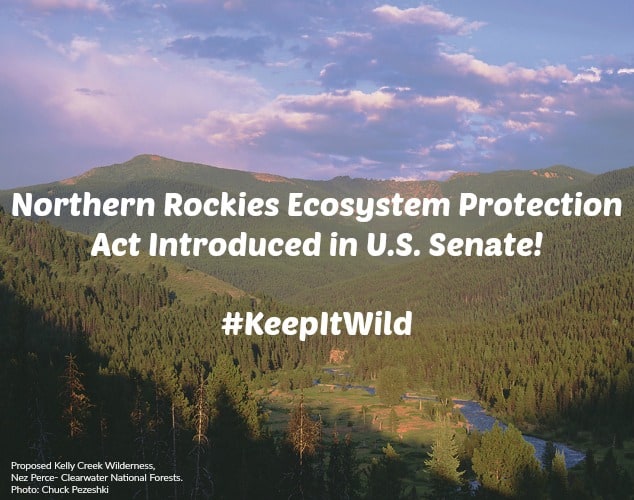NEWSFLASH: Mega corporation gobbles up slightly less-mega corporation; chops jobs to increase profits; blames enviros. Film at 11.
There’s a reason the Montana Public Radio story on Weyerhaeuser’s announcement that they were closing two mills and an administrative office in Columbia Falls opens with “One of the world’s largest private owners of timberlands….”
Weyerhaeuser owns 880,000 acres of private timberland in just Montana, and in total they owns/controls 13 million acres of private timberlands. The company is worth $25 billion dollars. As Montanans will recall, they purchased Plum Creek Timber Company in November 2015 for $8 billion, a move that surprised many people in Montana, including our entire Congressional delegation and the governor.
Does anyone think that maybe, just maybe, the corporate executives at Weyhaeuser and Plum Creek knew that these closures were coming?
Some of us weren’t very surprised. I agree with Dave Skinner about very few things, but I agree with much of his December 2015 analysis of something called Real Estate Investment Trusts (REITs), and specifically how it pertains to the Weyhaeuser-Plum Creek Deal. Give Skinner’s “The New Timber Beasts” a read.
“That Weyerhaeuser and Plum Creek are merging might have surprised some Montanans. Not me. Why not? Well, I guess it’s time to remind everyone America’s timber beasts are dead, replaced by a new kind of beast – Real Estate Investment Trusts (REITs)….
REIT’s must pay 90 percent of untaxed annual profit to shareholders, who are then taxed 15 percent on their capital gain. All things being equal, a dollar in a REIT pays back 35 percent more to an investor than a dollar in an otherwise-identical integrated company. In the Wall Street universe, where billions chase hundredths of a point, that was a big fat hairy deal….
Significantly, America’s all-time greatest integrated timber barony, Weyerhaeuser (Weyco for short), held out the longest … in fact, lobbying Congress for tax treatment that would render the company equivalent to a REIT in terms of tax burden and shareholder return. For that effort, in 2008 Weyco scored a reduction in income tax to 17 percent, saving $182 million. Nonetheless, with REITs paying zero – Weyco kept spinning off mills (and people) in order to get under the REIT manufacturing-asset threshold, converting to REIT in 2010….
REITs aren’t focused on timber, except as a means of generating what stockholders crave – cash.”
Let’s also not forget that just 8 months ago the U.S.-Canada Softwood Lumber Agreement expired. Almost immediately Canada starting flooding the U.S. markets with lumber and wood products. The fact that the Canadian dollar has been so weak compared to the U.S. dollar also made the dumping of timber into the U.S. much more profitable for the Canadian timber industry.
Did anyone in Montana’s Congressional delegation or Gov Bullock do anything about the expired Softwood Lumber Deal? Nope. Is it a part of their campaign ‘stump’ speeches? No. The Missoulian actually did a very good editorial on the issue last October.
So far – and so very predictable – all the breaking newspaper stories on Weyerhaeuser’s pending mill closures feature Montana’s entire Congressional delegation and Gov Bullock singing the same exact tune: We need more National Forest logging.
Zinke even went so far as to blame Weyhaeuser’s closure on “activists.” Not to be outdone, Senator Daines was positive the closure was the “result of frivolous lawsuits by fringe environmentalists and excessive regulations.”
I was curious about those statements, so on the morning following Weyhaeuser’s announcement I called the lead timber sale planner for both the Flathead National Forest and the Kootenai National Forest. According to the U.S. Forest Service Weyhaeuser has bid on zero timber sales on either of these National Forests.
I also got a message from someone at Forest Service Employees for Environmental Ethics who wonders if it was even legal for Weyhaeuser to bid on National Forest timber sales in the western U.S. because they export so many raw logs (and jobs) to Asia. I’m looking into this more, but here’s the email I got:
“Isn’t Weyhaeuser barred from buying NF timber in MT because it exports raw logs? I think that Weyco cannot buy national forest logs because it exports its own unprocessed logs. Weyco doesn’t buy NF timber in the west. It does, for example, in Arkansas, but that’s east of the law’s 100th meridian log substitution bar.”
Here’s some else where considering. For the past two years the U.S. Forest Service’s Northern Region, which includes all the National Forests in Montana and the National Forests in Northern Idaho, met their annual timber harvest goals. A Washington Post investigation into U.S. Forest Service timber sales in Montana (following Sen Tester lying to Montanans on Montana Public Radio) found that only 4% of all U.S. Forest Service timber sales in Montana were unable to be logged because of litigation. For his ‘whopper’ of a lie, Senator Tester was given four pinocchios by Glenn Kessler, the Post’s “Fact Checker.”
Also, in March 2015, the Flathead National Forests Joe Krueger said this on MT Public Radio:
“A big factor that constrains how much wood products is coming off the [Flathead National Forest] is our existing budget. So that number of 28 million board feet of timber that we’re projecting as our timber sale quantity is constrained by budgets.”
Has anyone in the Montana Congressional delegation introduced a bill or calling on the rest of Congress to increase the U.S. Forest Service’s timber budgets? Nope.
Fact is, for the past two years in Montana the U.S. Forest Service could do an unlimited number of 3,000 acres timber sales on 5 million acres of National Forest land in Montana via a Farm Bill provision [and Gov. Bullock’s secret, no public notice, no public input nomination process). These timber sales would be “categorically excluded from the requirements of NEPA” and there would be no opportunity for the public to object, or appeal, these timber sales.
How much of this 5 million acres of National Forest lands in Montana available right now for ‘fast track’ logging have actually been logged? I’d put the number at about 5,000 to 10,000 acres actually logged, but that’s just a rough estimate.
Have Zinke, Tester and Daines called for more Congressional funding for this potential 5 million acres of Farm Bill logging in Montana? No they have not.
Perhaps it’s time for Rep Ryan Zinke, Sen Steve Daines and Sen Jon Tester to “put up, or shut up” when it comes to their complete failure to give the U.S. Forest Service the budgets they would need to do all the additional public lands logging they claim they want. Perhaps it’s time to admit that global economic realities, NAFTA, boardroom decisions by $25 billion corporations and other economic forces far greater than a handful of “activists” might really be at work here.
The workers who are being laid off and the people of Montana deserve to know what’s really going on here. Hopefully the Montana news media will dig a little deeper in the coming days and weeks and provide some answers.
UPDATE (June 23, 7pm): The Missoulian just posted this follow-up article, in which the Supervisors of the Flathead National Forest and Kootenai National Forest have this to say about Weyco and Plum Creek’s attempts to (n0t) bid on any timber sales since 2007.
Chip Weber, supervisor of the Flathead National Forest, and Chris Savage, supervisor of the Kootenai National Forest, confirmed that Thursday.
Weber noted there have only been two smaller timber sales offered in the Flathead since Weyerhaeuser absorbed Plum Creek this spring. Savage said neither Plum Creek nor Weyerhaeuser have bid on sales in the Kootenai National Forest since approximately 2007. He estimated 300 million to 400 million board feet of timber have been sold in that time.
“I do know they have emphasized harvesting off their own lands,” Weber said.
Tom Ray, Weyerhaeuser Montana Resources team leader, did not return phone messages Thursday. Just before 5 p.m. he sent an email saying he was tied up in meetings, adding, “At this time we don’t have anything to add to our public comments we made yesterday.”
Montana Public Radio also just posted an in-depth story here.
Remarkably, Julia Altemus with the Montana Wood Products Association had this to say, in spite of the facts uncovered:
“Given the short timber supply and the litigation mess, Weyerhaeuser had to make the decision they made and it did not surprise me.”
One irony to Altemus’ “did not surprise me” statement is that back in November 2015 when the merger was announced, Altemus didn’t think it was any big deal, while some of us (correctly) sounded the alarm.


